Evolution of domestic self-propelled ATGM platforms
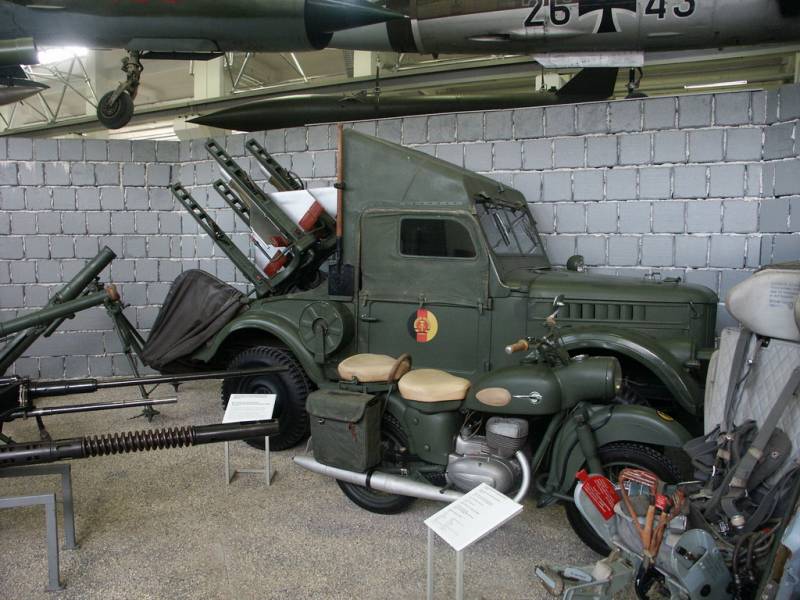
The 2P26 combat vehicle from the 2K15 "Bumblebee" complex, which was in service with the NNA of the GDR. Photo: Wikimedia Commons
In the early sixties, the first domestic anti-tank missile systems entered service with the Soviet army. In order to improve their combat qualities, the issue of placing them on self-propelled platforms was almost immediately worked out. Subsequently, this area received great development, and self-propelled ATGMs became one of the most important components of the armored vehicle fleet. At the same time, the evolution of platforms for ATGMs and changes in requirements for them are of great interest.
The first experiments
The first ATGM of the Soviet army was the Shmel product, which was put into service in August 1960. Already at the development stage, it was decided to place this complex on a self-propelled chassis. First, one of the available vehicles was used in this capacity, and then they created a protected version of the combat vehicle on a different platform.
The first version of the Shmel, the 2K15 complex, used a 2P26 type combat vehicle. It was built on the GAZ-69 chassis and was distinguished by fairly high cross-country ability. Four guides for launching missiles were placed in the body of the car; there was no room for additional ammunition. In the stowed position, the beams with missiles were placed vertically and covered with an awning. Before using weapons, they were lowered to a small angle. The cockpit housed the rocket control equipment.
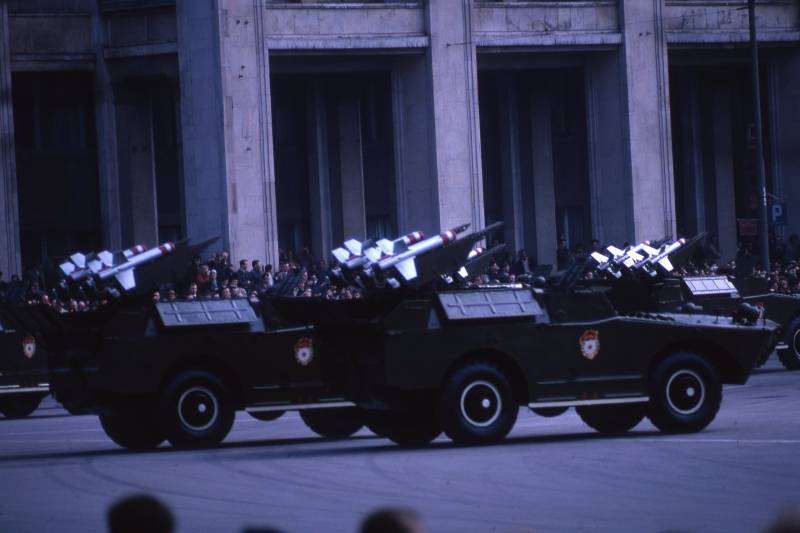
2P32 vehicles of the 2K8 Phalanx complex at the parade. Photo: Wikimedia Commons
In the early sixties, the army received a new 2K16 “Bumblebee” complex with an improved 2P27 combat vehicle. This product was built on the basis of the BRDM-1 armored vehicle, thanks to which the crew and missiles received protection from bullets and shrapnel. The vehicle received a retractable launcher with three guides. In the stowed position, it was located inside the aft compartment of the hull. Before firing, the roof of the compartment opened and the installation moved out. The possibility of horizontal aiming was provided. Control was carried out from the operator's seat in the cabin.
The 2P32 combat vehicle was built in a similar way for the self-propelled version of the 2K8 Phalanx complex. It differed from 2P27 only in the design of individual devices and other control equipment. Also based on the BRDM-1, the 9P110 vehicle of the 9K14 “Malyutka” complex was built. Its retractable launcher carried six missiles; another eight were inside the hull. The armored roof of the fighting compartment was placed directly on the launcher and rose with it.
New platform
In 1962, a new reconnaissance and patrol vehicle BRDM-2 entered service, which was also considered as a potential carrier of various weapons and systems. Anti-tank missiles were no exception, and by the end of the decade, self-propelled anti-tank systems appeared in the army at a new base.
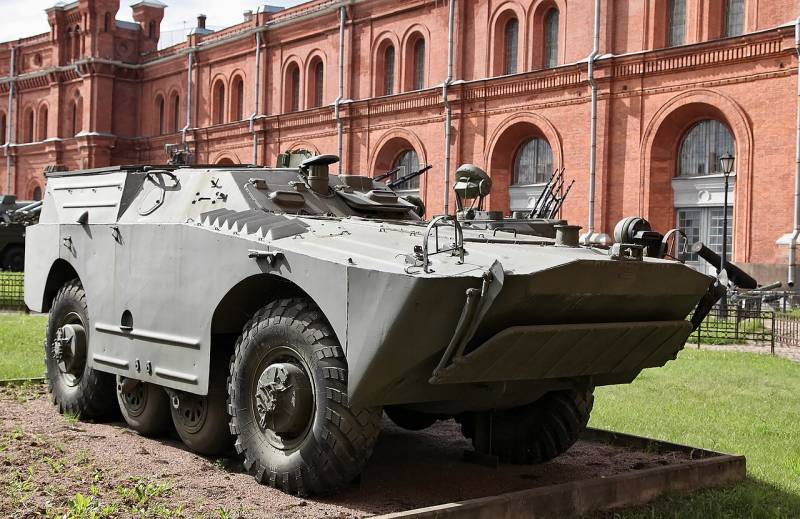
Museum vehicle 9P110 of the Malyutka-M complex. Photo Vitalykuzmin.net
The first to appear was the 9P122 combat vehicle with the Malyutka-M complex. From the point of view of the composition of weapons and their placement, it did not differ from the previous 9P110. This time, the launcher with six guides and an upper armor cover was placed in the central compartment of the hull. There were also mounts inside for 8 additional missiles. The control equipment corresponded to the new Malyutka-M project.
The BRDM-2 was considered a successful platform for ATGMs, and at the turn of the sixties and seventies, several new self-propelled systems appeared with common layout and technical solutions. Thus, the 9P133 combat vehicle carried the “Malyutka-P” complex, and the 9P137 carried the 9K8P “Flute” product (a modernized “Phalanx”) with an ammunition load of 8 missiles.
In the mid-seventies, the 9P148 vehicle of the 9K111-1 “Konkurs” complex entered service. Unlike its predecessors, its launcher was located on the roof of the hull and could not be removed inside. The installation had mechanisms for guidance in two planes, and five transport and launch containers with 9M113 missiles were attached to the swinging part. The total ammunition included up to 15 missiles, depending on their model.
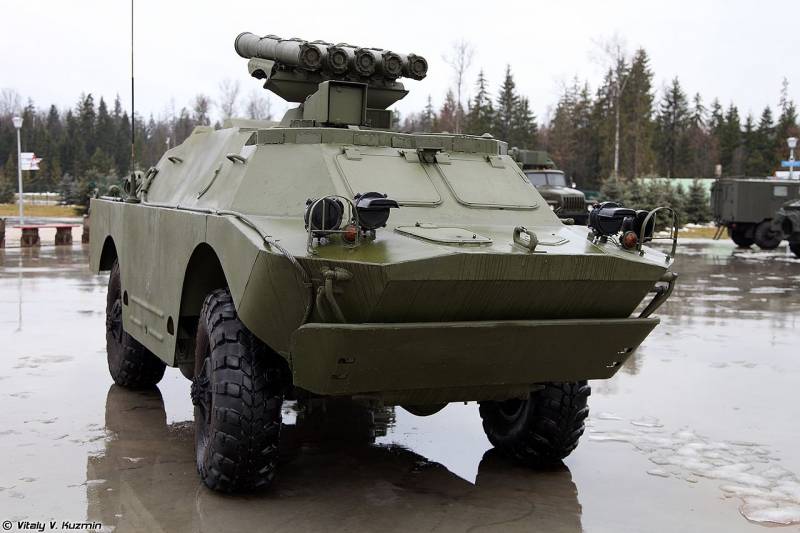
9P148 combat vehicle with Konkurs missiles. Photo Vitalykuzmin.net
Heavy platform
Since the late fifties, our country has been developing the IT-1 “missile tank” with the 2K4 “Dragon” anti-tank system. Unlike other self-propelled ATGMs, IT-1 was not a simple combination of ready-made elements. A significant part of such a complex, including the rocket and related equipment, was developed from scratch.
The basis for IT-1 was the T-62 medium tank. They took the hull, power plant, chassis and turret cap from him. The fighting compartment was almost completely given over to the mechanisms of the Dragon complex. A launcher with the ability to aim in two planes was placed on the roof of the tower. There was only one 3M7 missile on the installation at a time. Ammunition - 12 missiles.
During testing and operation among the troops, the IT-1 tank and its weapons performed well and confirmed their design characteristics. At the same time, the vehicle had a number of disadvantages in the form of an unreasonably large mass, outdated components, etc.
Lightweight version
In the mid-seventies, development of a self-propelled version of the 9K114 Shturm ATGM began. This combat vehicle was created taking into account the experience of designing and operating all previous self-propelled systems on different platforms, up to the Dragon. The developers of “Sturm” took into account all the positive reviews and complaints, as a result of which they were able to find the optimal concept - which is still in use today.
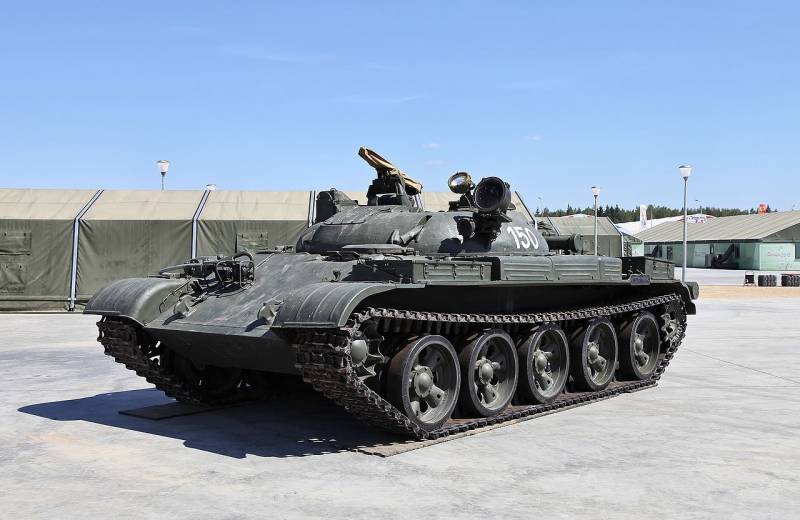
Tank IT-1 in the Patriot park. Photo Vitalykuzmin.net
The 9P149 combat vehicle for 9K114 was made on the basis of the MT-LB multi-purpose tractor. A tracked platform of this type had high maneuverability in all conditions, as well as sufficient load capacity and capacity. At the same time, the bulletproof and anti-fragmentation armor was fully consistent with the intended use tactics and threats.
The missile system units are located in the rear chassis compartment. The vehicle received a lifting launcher with guidance drives and mounts for a TPK with a missile. Inside the body there is a mechanized stowage unit for 12 9M114 missiles. Preparation for launch is carried out automatically, at the operator’s command. The radio and electronic components of the ATGM used for control are located in the front part of the body, next to the operator’s seat.
The next domestic self-propelled ATGM 9K123 "Chrysanthemum" was built on the chassis of the BMP-3 infantry fighting vehicle. Like previous models, this complex received a lifting launcher and internal stowage with a TPK, as well as a set of various radio-electronic equipment. At the same time, “Chrysanthemum” is distinguished by a launcher for two missiles and carries 15 TPK. It is possible to use missiles of various modifications with a choice before preparing for launch.
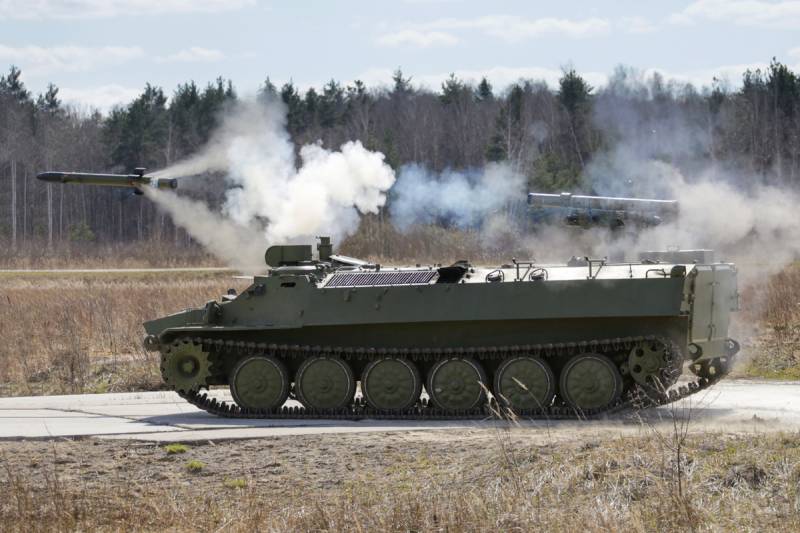
Complex 9K114 "Sturm" on the MT-LB chassis. Photo by the Russian Ministry of Defense
The same BMP-3 was used to create two versions of the 9K135 Kornet self-propelled complex. The 9P161 and 9P162 combat vehicles are equipped with two launchers, each of which uses one missile. There are also controls, automatic loading, etc. In addition, it was proposed to install such a combat module on other platforms, such as the BTR-80.
Modern armored car
During the development of the Kornet ATGM, Russian industry several years ago returned to the ideas used several decades ago - but implemented them on a new basis and using modern developments. Thus, due to the creation of new launchers, it has again become possible to install missiles on existing armored vehicles.
Several launchers-combat modules have been developed for the Kornet ATGM, such as 9P163-2 Quartet, 9P163-2 Quartet-M or 9P163-3. Each of them carries four missiles and has an optical-electronic system. In addition, the design allows the module to be removed inside the body of the carrier machine.
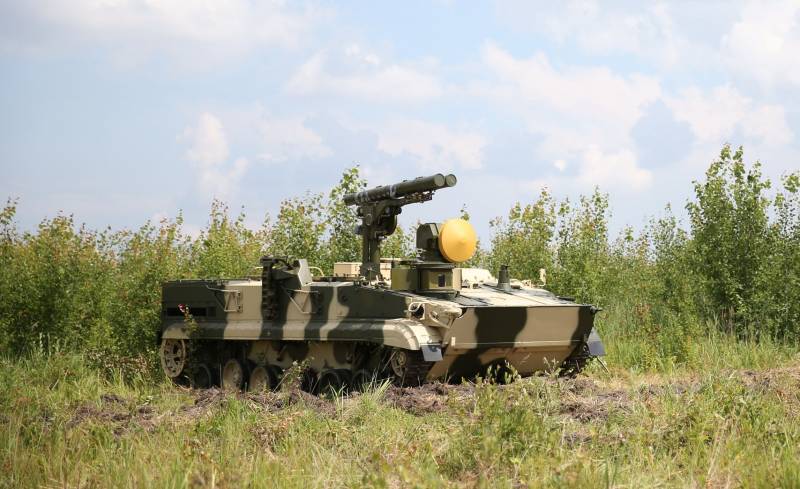
Complex "Chrysanthemum". Photo KBM
Various options for using the 9P163 series modules were demonstrated and proposed, but the most famous was the Kornet-D complex in the form of a Tiger armored car with two 9P163-3 launchers. Such a vehicle has a ready-to-use ammunition load of eight missiles; The same amount is located inside the case and can be installed when recharging. Two modules are capable of simultaneously attacking different targets.
Ways of development
Installing an ATGM on one or another carrier provides obvious advantages. Therefore, from the very beginning, in domestic projects of anti-tank systems, the possibility of creating a self-propelled modification was explored. Moreover, some of them were originally created in this form, and a wearable modification was not provided. Subsequently, the direction of self-propelled ATGMs received great development.
It is easy to see how the customer and project implementers chose platforms for deploying ATGMs. In each project of this kind, a modern and affordable serial model of equipment with sufficient characteristics was used. In most cases, they tried to do without radical restructuring of the original design. The only serious exception was the IT-1 “missile tank”. However, in this case we are talking about a fundamentally unique model, different from all other domestic and foreign developments.

Self-propelled ATGM "Kornet-D" based on the "Tiger" on Red Square. Photo by AP RF
The very first domestic self-propelled ATGM was made on the basis of an army vehicle. The result was a combat vehicle with an acceptable level of firepower, but virtually no protection. Based on the experience of its operation, in the future the complexes were built only on protected chassis. At the same time, for a long time, a number of projects used compact and lightweight equipment - BRDM of two models. Now this idea is being used again in the Kornet-D project.
However, the MT-LB and BMP-3 can be considered the best ground-based platforms for anti-tank missiles. Due to their relatively large size and carrying capacity, they are capable of carrying missiles of various sizes and weights, including the largest and heaviest models, such as 9M114 or 9M123 from the Sturm and Khrysantema. Accordingly, such a self-propelled complex shows the highest performance.
In recent years, the domestic industry has presented several new versions of modern self-propelled systems, built on current platforms and using the latest model missiles. It is obvious that the process of developing such technology will continue further. It is unclear what promising ATGMs will be in the distant future, but it can be assumed that the experience of today's projects and their best ideas will be used in their creation.
Information